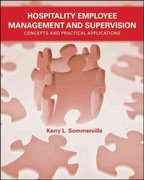Question
The following example and exercises are designed to provide practice in applying the following threeearned value rules:1.percent complete rule2.0/100 rule3.50/50 ruleSee thechapterfor an explanation of
The following example and exercises are designed to provide practice in applying the following threeearned value rules:1.percent complete rule2.0/100 rule3.50/50 ruleSee thechapterfor an explanation of each of these rules.SIMPLIFYING ASSUMPTIONSThe same simplifying assumptions usedinthe chapter example and exercises will also be used here.1.Assume each cost account has only one work package and each cost account will be represented asan activity on the network.2.The project network early start times will serve as the basis for assigning the baseline values.3.Except when the 0/100 rule or 50/50 rule is used, baseline values will be assigned linearly, unlessstated differently. (Note:in practice estimated costs should be applied'exactly'as they are expectedto occur so measures of schedule and cost performance are useful and reliable.)4.For purposes of demonstrating the examples, from the moment work on an activity begins, someactual costs will be incurred each period until the activity is completed.5.When the 0/100 rule is used, the total cost for the activity is placed in the baseline on the early finishdate.6.When the 50/50 rule is used, 50 percent of the total cost is placedin the baseline on the early startdate and 50 percent on the early finish date.APPENDIX9.1EXERCISES1.Given the information provided for development of a product warranty project for periods 1to 7, compute the SV, CV, SPI, and CPI for each period. Plot the EV and the AC on the PV graphprovided. Explain to the owner your assessment of the project at the end of period 7 and thefuture expected status of the project at completion.Figure A9.1Apresents the project network. Figure A9.1B presents the project baseline,noting thoseactivities using the 0/100 (rule 3) and 50/50 (rule 2) rules. For example, activity 1 uses rule 3, the0/100 rule. Although the early start time is period 0, the budget is not placed in the time-phasedbaseline until period 2 when the activity is planned to be finished (EF). This same procedure hasbeen used to assign costs for activities 2 and 7. Activities 2 and 7 use the 50/50 rule. Thus, 50 percent of the budget for each activity is assigned on its respective early start date (time period 2 foractivity 2 and period 11 for activity 7) and 50 percent for their respective finish dates. Remember,when assigning earned value as the project is being implemented, if an activity actually starts early orlate, the earned values must shift with the actual times. For example, if activity 7 actually starts inperiod 12 rather than 11, the 50 percent is not earned until period 12.
The following example and exercises are designed to provide practice in applying the following threeearned value rules:1.percent complete rule2.0/100 rule3.50/50 ruleSee thechapterfor an explanation of each of these rules.SIMPLIFYING ASSUMPTIONSThe same simplifying assumptions usedinthe chapter example and exercises will also be used here.1.Assume each cost account has only one work package and each cost account will be represented asan activity on the network.2.The project network early start times will serve as the basis for assigning the baseline values.3.Except when the 0/100 rule or 50/50 rule is used, baseline values will be assigned linearly, unlessstated differently. (Note:in practice estimated costs should be applied'exactly'as they are expectedto occur so measures of schedule and cost performance are useful and reliable.)4.For purposes of demonstrating the examples, from the moment work on an activity begins, someactual costs will be incurred each period until the activity is completed.5.When the 0/100 rule is used, the total cost for the activity is placed in the baseline on the early finishdate.6.When the 50/50 rule is used, 50 percent of the total cost is placedin the baseline on the early startdate and 50 percent on the early finish date.APPENDIX9.1EXERCISES1.Given the information provided for development of a product warranty project for periods 1to 7, compute the SV, CV, SPI, and CPI for each period. Plot the EV and the AC on the PV graphprovided. Explain to the owner your assessment of the project at the end of period 7 and thefuture expected status of the project at completion.Figure A9.1Apresents the project network. Figure A9.1B presents the project baseline,noting thoseactivities using the 0/100 (rule 3) and 50/50 (rule 2) rules. For example, activity 1 uses rule 3, the0/100 rule. Although the early start time is period 0, the budget is not placed in the time-phasedbaseline until period 2 when the activity is planned to be finished (EF). This same procedure hasbeen used to assign costs for activities 2 and 7. Activities 2 and 7 use the 50/50 rule. Thus, 50 percent of the budget for each activity is assigned on its respective early start date (time period 2 foractivity 2 and period 11 for activity 7) and 50 percent for their respective finish dates. Remember,when assigning earned value as the project is being implemented, if an activity actually starts early orlate, the earned values must shift with the actual times. For example, if activity 7 actually starts inperiod 12 rather than 11, the 50 percent is not earned until period 12.
Step by Step Solution
There are 3 Steps involved in it
Step: 1

Get Instant Access to Expert-Tailored Solutions
See step-by-step solutions with expert insights and AI powered tools for academic success
Step: 2

Step: 3

Ace Your Homework with AI
Get the answers you need in no time with our AI-driven, step-by-step assistance
Get Started


